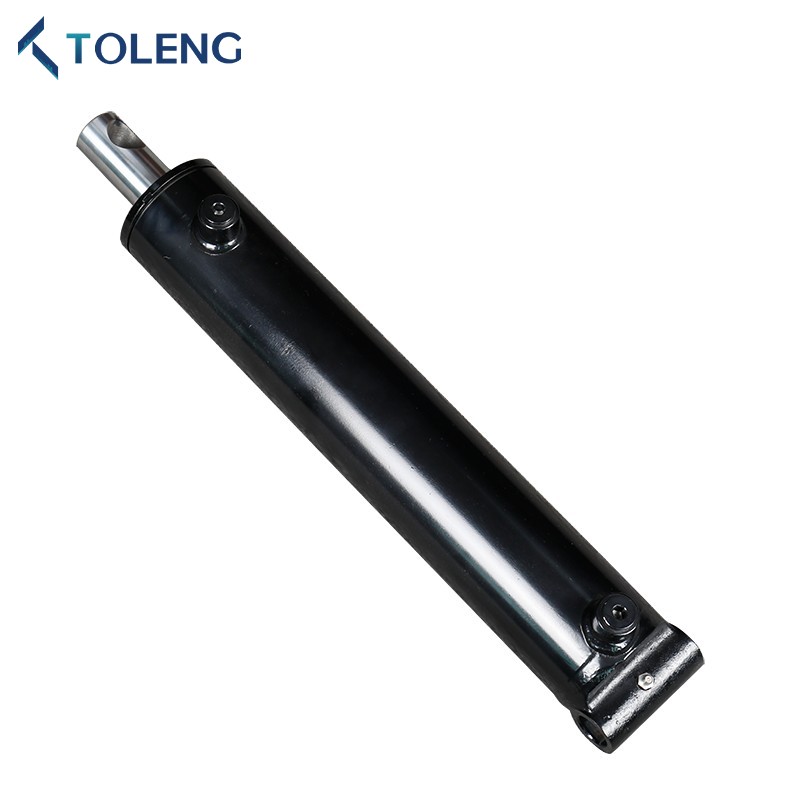What are the Main Components of a Hydraulic Cylinder?
2025-01-08
Hydraulic cylinders are fundamental components in many industrial and mobile machinery systems. Their ability to generate linear motion and force makes them indispensable in various applications. To understand their functionality, it’s crucial to explore the main components that make up a hydraulic cylinder.
1. Cylinder Barrel
The cylinder barrel forms the main body of the hydraulic cylinder. It is a robust, cylindrical structure that houses the piston and hydraulic fluid. The barrel’s inner surface is precisely machined to ensure smooth movement of the piston, minimizing wear and tear while maintaining efficiency.

2. Piston
The piston is a critical moving part within the cylinder barrel. It divides the internal space into two chambers, allowing the pressurized hydraulic fluid to create force. The piston translates hydraulic pressure into linear motion, which is transferred to the piston rod.
3. Piston Rod
The piston rod is attached to the piston and extends out of the cylinder. This component transmits the linear motion generated inside the cylinder to the external machinery or load. It is typically made from high-strength steel and is often chrome-plated to resist corrosion and wear.
4. Cylinder Head (or End Cap)
The cylinder head, located at one end of the barrel, provides an opening for the piston rod to move through. It also contains seals and bearings that prevent hydraulic fluid leakage and support the rod during operation.
5. Cylinder Base (or End Plug)
The cylinder base, situated at the opposite end of the barrel from the head, encloses the cylinder. It serves as a structural support and may include a port for hydraulic fluid entry or exit.
6. Seals
Seals are vital for maintaining the efficiency of a hydraulic cylinder. They prevent hydraulic fluid from leaking between different chambers or out of the cylinder. Seals are located around the piston, the piston rod, and the cylinder head.
7. Ports
Ports are openings in the cylinder that allow hydraulic fluid to flow in and out. These are strategically placed to direct fluid into the appropriate chamber, facilitating the piston’s movement.
8. Rod Gland (or Rod End)
The rod gland is a housing on the cylinder head that supports the piston rod. It contains seals and bearings that reduce friction and protect against contaminants entering the cylinder.
9. Mounting Components
Mounting components such as clevis mounts, trunnion mounts, or flange mounts attach the hydraulic cylinder to the machinery. These components ensure stability and proper alignment during operation.
10. Cushioning Mechanism (Optional)
Some hydraulic cylinders include cushioning mechanisms to slow the piston’s movement near the end of its stroke. This feature reduces shocks and vibrations, extending the cylinder’s lifespan and ensuring smooth operation.
How These Components Work Together. Each component of a hydraulic cylinder has a specific role that contributes to its overall function. The cylinder barrel provides a protective housing, the piston and piston rod convert hydraulic energy into mechanical force, and the seals and ports maintain the hydraulic system’s efficiency. Together, these parts enable the cylinder to perform tasks ranging from lifting heavy loads to precise positioning.
As a professional Standard Hydraulic Cylinder manufacturer and supplier in China, we have our own factory. Whether you need customized services or want to buy high quality Standard Hydraulic Cylinder, you can leave us a message. Visit our website at www.biggud.com to learn more about our products. For inquiries, you can reach us at sales01@phtl.cn.

























